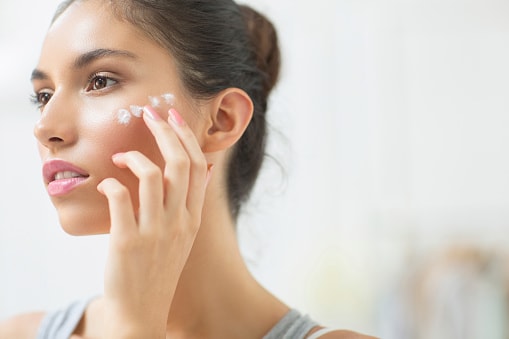What You Should Know About Sunscreens
8 years ago | Sunscreens
By Joy Stephenson-Laws, JD, Founder and Pauline Jose, MD
Sunlight exposure has many health benefits, including vitamin D and mood elevation. But it may also have unwanted effects like sunburn, skin cancer and premature aging.
Recommendations from the CDC and the FDA include protecting yourself from the sun, especially when the sun rays are most intense - from 10 am to 2 pm. They suggest wearing wide-brimmed hats, protective clothing and shades. And of course, another recommended means of protection is the use of sunscreen products.
Ultraviolet radiation (UVR) can be very damaging to the skin. According to the National Institutes for Health (NIH), “UVR is divided into wavelength ranges identified as UVA (315 to 400 nm), UVB (280 to 315 nm), and UVC (100 to 280 nm). Of the solar UV energy reaching the equator, 95% is UVA and 5% is UVB. No measurable UVC from solar radiation reaches the earth's surface, because the shortest UV wavelengths are completely absorbed by ozone, molecular oxygen, and water vapor in the upper atmosphere.”
UVB and UVA rays both play a role in causing skin cancers. UVA rays penetrate more deeply into the skin and play a greater role in premature skin aging, including wrinkle formation.
The NIH also reports that exposure to both types of rays over time may make the skin less elastic. Skin may even become thickened and leathery, wrinkled or thinned like tissue paper.
There are many sunscreen products on the market. And some sunscreen products have been more successful at blocking UVB rays than UVA rays. So it is important to keep the following in mind when selecting your sunscreen product:
- Sunscreens should protect against ALL types of UVR. Broad spectrum sunscreen provides protection (against UVA and UVB) by providing a chemical barrier that either absorbs or reflects UV radiation before it can damage the skin.
- The higher the sun protective factor (SPF), the more protection from UVA and UVB rays. Theoretically, products with high SPFs generally provide more protection against hazardous effects of sunlight than those with low SPFs. SPF is measured as the ratio of the amount of UV radiation required to burn the protected (with sunscreen) skin to that required to burn the same unprotected (without sunscreen) skin, all other factors being constant. For example, when a product with SPF 50 is applied, it will protect the skin until it is exposed to 50 times more UVB radiation than that is required to burn the unprotected skin.
- It is also very important to keep in mind, “[p]roducts containing an SPF of more than 50 should mention in the label that there is a lack of evidence to support that sunscreens with an SPF of more than 50 have better efficacy than those containing SPF 50 or below,” according to the NIH.
- All sunscreen ingredients have been approved by the Food and Drug Administration (FDA), but you should still investigate what you are putting on your skin.
According to the Environmental Working Group (EWG), “[t]he Food and Drug Administration has not reviewed evidence of potential hazards of sunscreen filters – instead it grandfathered in ingredients used in the late 1970s when it began to consider sunscreen safety.” Active ingredients in sunscreens come in two forms, mineral and chemical filters. The EWG says that “[e]ach [filter] uses a different mechanism for protecting skin and maintaining stability in sunlight.
The most common sunscreens on the market contain chemical filters. These products typically include a combination of two to six of the following active ingredients: oxybenzone, avobenzone, octisalate, octocrylene, homosalate and octinoxate. Mineral sunscreens use zinc oxide and/or titanium dioxide. A handful of products combine zinc oxide with chemical filters.”
“Laboratory studies indicate that some chemical UV filters may mimic hormones, and physicians report sunscreen-related skin allergies, which raises important questions about unintended human health consequences from frequent sunscreen application,” EWG also reports.
Here is a guide to help you navigate the lotion and sunscreen aisle at the store. You can also click here for more useful information about sun protection.
Here is more Useful Info to Keep in Mind so you can be Proactive About Sun Protection.
- Sunscreen products may cause Vitamin D deficiency, therefore you need to make sure you consume foods rich in Vitamin D or take a supplement.
- Apply every two hours and 15 minutes before first exposure to sun.
- Apply the right amount, which will fit approximately your cupped hand for the face area, and about 30 cc for the whole body.
Enjoy the rest of your summer, and enjoy your healthy life!
Pauline Jose is a specialist in family medicine and one of pH Lab’s doctors (www.phlabs.org). She is also a clinical instructor at UCLA, Department of Family Medicine. Dr. Jose completed her residency in family medicine at the Brooklyn Hospital Center in New York City. She is a co-author of Minerals – The Forgotten Nutrient: Your Secret Weapon for Getting and Staying Healthy, available through Amazon, iTunes and bookstores.
Joy Stephenson-Laws is the founder of Proactive Health Labs, a national non-profit health information company that provides education and tools needed to achieve optimal health. Her most recent book is Minerals – The Forgotten Nutrient: Your Secret Weapon for Getting and Staying Healthy, available through Amazon, iTunes and bookstores.



